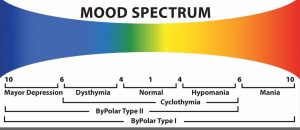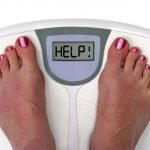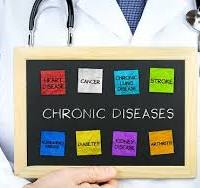Category: Blog
By Angela Couch, RN, MSN, PMHNP-BC, Lindner Center of HOPE, Psychiatric Nurse Practitioner
Hypochondriasis has been replaced in the DSM 5 by Somatic Symptom Disorder (SSD) or Illness Anxiety Disorder (IAD), both categorized under Somatic Symptom and Related Disorders. Previous diagnoses classified under Somatoform Disorders were often interpreted with a negative connotation, implying that the patient’s concerns were not real or valid. However, it is not appropriate to give a person a mental diagnosis for no other reason than no medical cause can be identified, nor does the presence of a medical diagnosis exclude a co-morbid mental disorder. About 75% of persons previously diagnosed with Hypochondriasis will fall into the category of Somatic Symptom Disorder, while the other 25% will meet criteria for Illness Anxiety Disorder. Let’s examine the differences.
Somatic Symptom Disorder (SSD)
Somatic Symptom Disorder (SSD), requires the patient to have one or more somatic symptoms (that is to say, pertaining to the body), that are distressing or result in significant disruption of daily life. Excessive thoughts, feelings, or behaviors related to the somatic symptoms or associated health concerns are manifested by at least one of the following: disproportionate and persistent thoughts about the seriousness of one’s symptoms, persistently high level of anxiety about health or symptoms, and excessive time and energy devoted to these symptoms or health concerns. Although any one somatic symptom may not be continuously present, the state of being symptomatic is persistent, generally more than 6 months duration. Specifiers include predominant pain (formerly pain disorder), persistent, and mild, moderate or severe. High health anxiety can be a symptom of SSD but is not necessary for a diagnosis of SSD. Patients with SSD often seek care from multiple doctors and often feel their assessments were inadequate. Reassurance given does not seem adequate nor to last for these patients. Patients with SSD may worry that excessive physical activity may damage their body and may seem more sensitive to medication side effects. The prevalence in adults may be 5-7% of the population, likely more common in females. In comparison to Obsessive-Compulsive Disorder (OCD), the recurrent worries are less intrusive and individuals may not exhibit repetitive behaviors aimed at reducing anxiety other than seeking assessment. Usually in OCD, the obsessions would not be confined to somatic symptoms.
Illness Anxiety Disorder (IAD)
Illness Anxiety Disorder (IAD), requires the patient to have a preoccupation with having or acquiring a serious illness. Somatic symptoms are either not present or are mild in intensity. If another medical condition is present or there is a high likelihood of developing a medical condition, the preoccupation is excessive or disproportionate. There is a high level of anxiety about health and the individual is easily alarmed about their health status. The individual performs excessive health related behaviors, such as body checking, or exhibits maladaptive avoidance, such as avoiding medical assessment. In IAD, the distress has been present for at least 6 months, though the specific illness targeted may change during that time. The preoccupation is not better explained by another mental disorder such as SSD, panic disorder, generalized anxiety disorder, body dysmorphic disorder, obsessive-compulsive disorder or delusional disorder. In IAD, the distress comes from the distress about the significance, meaning or cause of the complaint, not from a specific physical symptom or sensation. Most commonly, the physical symptoms exhibited are normal type sensations or considered benign or self-limiting dysfunction. Individuals who have IAD may be easily alarmed by reading or hearing about illnesses, and often will seek reassurance about illnesses through internet research or speaking to doctors or friends and family. In a smaller number of cases, the patient may be help avoidant versus help seeking. The reassurance given by medical professionals may potentially heighten the patient’s anxiety. Those who have IAD may avoid activities in order to avoid harming themselves or catching an illness from others. The prevalence of IAD is possibly between 1.3-10% in the general population, and in ambulatory medical populations the 6-12 month prevalence is between 3-8%, and about equal across the sexes. The prevalence in OCD is also equal across the sexes. Persons with IAD may exhibit the intrusive thoughts about having a disease and may do compulsive behaviors such as reassurance seeking, but the preoccupations are usually focused on having a disease; in OCD, the intrusive thoughts are often about potentially getting a disease in the future or wanting certainty that they do not have one right now. In OCD, the obsessions and compulsions usually extend beyond disease concerns.
One study examined 118 treatment seeking patients with health anxiety, and gave them structured diagnostic interviews to assess for Hypochondriasis, IAD and SSD, as well as co-morbid mental disorders; additionally, the study looked at self-report measures of health anxiety, co-morbid symptoms, cognitions and behaviors, as well as service utilization. 45% of patients were diagnosed with SSD, 47% with IAD, and 8% with co-morbid SSD/IAD. SSD and IAD were seen to be more reliable diagnoses than Hypochondriasis. Half of the sample group met criteria for Hypochondriasis, and of that sample, 56% met criteria for SSD, 36% for IAD, and 8% for co-morbid SSD/IAD. SSD was characterized by higher levels of health anxiety, depression, somatic symptoms, and health service utilization, in addition to higher rates of major depression, panic disorder and agoraphobia.
Patients with these diagnoses often present in medical settings initially, and arrive in a mental health care setting via referral from another medical provider. It is important that medical providers validate the individual’s experience of symptoms and their anxiety, but also explain the rationale of supplementing medical interventions with mental health treatment.
Summary of Differences:
IAD SSD
Absence/minimal distressing physical Presence of distressing physical
symptoms symptoms
High health anxiety not a requirement High health anxiety always present
Reassurance seeking common, but also Reassurance/assessment seeking
less frequently can be care avoidant related
to anxiety
Equal across sexes More common in females
May engage in additional compulsions More frequently associated with co-morbid depression, panic disorder,
higher level of health anxiety, and more utilization of medical services
To learn about anxiety disorders treatment at Linder Center of HOPE, visit https://lindnercenterofhope.org/anxiety-disorders/
References:
American Psychiatric Association: Diagnostic and Statistical Manual of Mental Disorders, 5th Edition. Arlington, VA, American Psychiatric Association, 2013.
Newby, J.M., Hobbs, M.J., Mahoney, E.J., Shiu, W. and Andrews, G. DSM-5 illness anxiety disorder and somatic symptom disorder: Comorbidity, correlates, and overlap with DSM-IV hypochondriasis. Journal of Psychosomatic Research, 101, 31-37.











